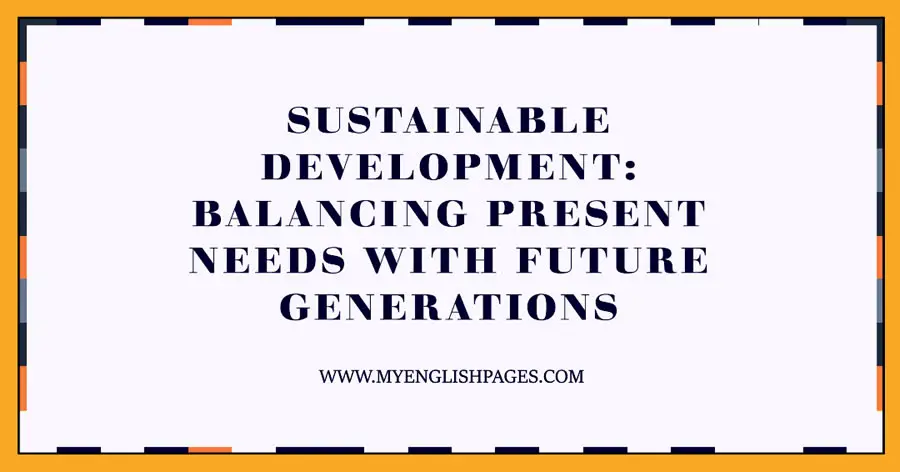Reading Comprehension – Sustainable Development

Develop your reading skills. Read the following text about Sustainable Development and do the comprehension task.
Understanding Sustainable Development: Balancing Present Needs with Future Generations
Sustainable Development
The concept of sustainable development, as articulated in the report “Our Common Future” (also known as the Brundtland Report), is defined as development that meets the needs of the present without compromising the ability of future generations to meet their own needs. In essence, sustainable development seeks to improve the quality of life for all individuals while ensuring the preservation of natural resources for future use.
It emphasizes two primary goals: enhancing the well-being of current generations and safeguarding resources to meet the needs of future generations indefinitely. Unlike green development, which prioritizes environmental sustainability over economic and cultural factors, sustainable development integrates social, economic, and environmental considerations. It recognizes the essential needs of the world’s poor and acknowledges the limitations imposed by technology and social organizations on environmental sustainability.
Moreover, sustainable development underscores the responsibility of present generations to restore ecosystems damaged by past actions and prevent further degradation. Achieving sustainable development requires collective action from governments, organizations, and individuals worldwide. Given the pressing environmental challenges and disparities between developed and underdeveloped countries, practical strategies must be implemented to reverse harmful trends.
The World Commission on Environment and Development outlined seven critical objectives for environmental and development policies aligned with sustainable development principles:
- Reviving economic growth
- Improving the quality of growth
- Meeting essential needs and aspirations, including jobs, food, energy, water, and sanitation
- Achieving a sustainable population level
- Conserving and enhancing the resource base
- Redirecting technology and managing risks
- Integrating environmental and economic considerations into decision-making processes
These objectives remain relevant today, emphasizing the urgency of proactive measures to address environmental degradation and social inequalities. Failing to prioritize sustainable development poses significant risks to current and future generations, highlighting the imperative for swift and decisive action. Efforts to implement sustainable development are progressing slowly, indicating that there is still much work to be done.
Source: Wikipedia
Related Pages:


